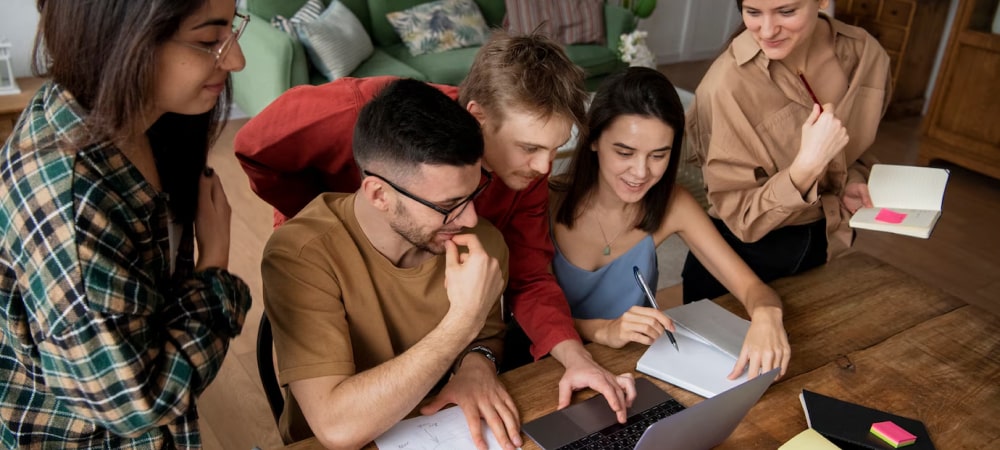The United States is home to some of the world’s most prestigious universities and colleges, making it a top destination for international students. To study in the U.S., you’ll need to apply for a student visa, a process that can seem complex if you’re unfamiliar with the steps involved. Understanding the requirements and following the correct procedure is essential to ensure your visa application is successful.
In this comprehensive guide, we’ll walk you through every stage of applying for a U.S. student visa, from choosing the right visa type to preparing for the visa interview. Whether you’re pursuing undergraduate, graduate, or specialized programs, this guide will help you navigate the process with ease.
1. Understanding U.S. Student Visa Types
Before starting your visa application, it’s important to understand the types of student visas available for international students. The U.S. issues three types of visas for study purposes:
a. F-1 Visa (Academic Student)
The F-1 visa is the most common type of student visa, used by international students pursuing academic studies in U.S. institutions. This visa applies to undergraduate, graduate, and PhD programs, as well as English language courses.
- Eligibility: You must be accepted into a full-time academic or language program at an accredited U.S. institution.
- Duration: The F-1 visa is valid for the length of your academic program, plus optional practical training (OPT) for work after graduation.
b. M-1 Visa (Vocational Student)
The M-1 visa is for students enrolled in vocational or technical training programs at U.S. institutions, such as community colleges, technical schools, or trade schools.
- Eligibility: You must be accepted into a vocational or non-academic program.
- Duration: M-1 visa holders are typically allowed to stay for the duration of their program, up to a maximum of one year, with limited options for extensions.
c. J-1 Visa (Exchange Visitor)
The J-1 visa is for students participating in exchange programs, including university exchanges, high school exchanges, or sponsored internships and training programs.
- Eligibility: You must be part of an official exchange program sponsored by a U.S. government agency or private organization.
- Duration: J-1 visa holders are allowed to stay for the length of the exchange program.
2. Eligibility Requirements for a U.S. Student Visa
To apply for a student visa, you must meet specific eligibility requirements. Below are the key criteria:
a. Acceptance into a SEVP-Certified School
To apply for an F-1 or M-1 visa, you must first be accepted by a Student and Exchange Visitor Program (SEVP)-certified U.S. institution. This includes universities, colleges, language schools, and vocational programs. Once accepted, the institution will provide you with a Form I-20, which is required for the visa application.
b. Proof of Financial Ability
You must demonstrate that you have sufficient financial resources to cover your tuition fees, living expenses, and travel costs while studying in the U.S. This proof may include bank statements, scholarships, or sponsorship letters.
c. Ties to Your Home Country
You must show that you intend to return to your home country after completing your studies. This typically involves demonstrating strong family, economic, or social ties to your home country.
d. English Language Proficiency
Most U.S. institutions require proof of English language proficiency for admission, typically through standardized tests like the TOEFL or IELTS. A good score on these tests will also support your visa application, as it shows your ability to succeed academically in an English-speaking environment.
3. Step-by-Step Process for Applying for a U.S. Student Visa
The U.S. student visa application process involves several steps, from receiving your Form I-20 to attending the visa interview. Below is a detailed breakdown of each step.
a. Step 1: Get Accepted to a SEVP-Certified School
The first step is applying to and receiving acceptance from a SEVP-certified U.S. institution. Once accepted, the institution will issue you a Form I-20 (for F-1 and M-1 visas) or a Form DS-2019 (for J-1 visas). This form is necessary for your visa application and contains information about your program, costs, and duration of study.
- Form I-20: Required for F-1 and M-1 visa applications.
- Form DS-2019: Required for J-1 visa applications.
b. Step 2: Pay the SEVIS Fee
Before applying for the visa, you must pay the SEVIS (Student and Exchange Visitor Information System) fee. The SEVIS fee supports the maintenance of your student records and is a mandatory step in the application process.
- SEVIS Fee for F-1 Visa: $350.
- SEVIS Fee for M-1 Visa: $350.
- SEVIS Fee for J-1 Visa: $220.
You can pay the SEVIS fee online at the SEVIS I-901 fee payment website. Once the payment is made, print the receipt, as it will be needed for your visa interview.
c. Step 3: Complete the DS-160 Visa Application Form
The next step is to complete the Online Nonimmigrant Visa Application Form (DS-160). This is the official visa application form for all nonimmigrant visas to the U.S., including student visas.
- Personal Information: Provide details such as your name, date of birth, and passport number.
- Program Information: Include information from your Form I-20 or DS-2019.
- Photo Upload: You’ll need to upload a digital passport-sized photo following specific guidelines.
Once completed, submit the DS-160 form and save the confirmation page with the barcode. You will need this for your visa interview.
d. Step 4: Pay the Visa Application Fee
The visa application fee for F-1, M-1, and J-1 student visas is $160. This fee is non-refundable and must be paid before scheduling your visa interview. Payment options vary by country, so check the U.S. embassy or consulate website in your country for payment methods.
e. Step 5: Schedule the Visa Interview
After paying the visa application fee, you will need to schedule an appointment for your visa interview at the nearest U.S. embassy or consulate. Be sure to schedule your interview as early as possible, as wait times can vary depending on your location and time of year.
- Documents Needed to Schedule: DS-160 confirmation number, receipt for the visa application fee, and SEVIS fee receipt.
f. Step 6: Prepare the Required Documents
Before attending your visa interview, gather all the required documents to ensure your application process runs smoothly. These documents will be reviewed by the consular officer during your interview:
- Valid Passport: Your passport must be valid for at least six months beyond your intended stay in the U.S.
- Form I-20 or DS-2019: Issued by your U.S. school, signed by both you and a school official.
- DS-160 Confirmation Page: Print the barcode confirmation page from the DS-160 application.
- SEVIS Fee Receipt: Proof that you have paid the SEVIS fee.
- Visa Application Fee Receipt: Proof that you have paid the visa application fee.
- Passport-Style Photo: A 2×2 inch photo, following the U.S. visa photo requirements.
- Proof of Financial Support: Bank statements, scholarship letters, or affidavits showing you have the funds to cover tuition and living expenses.
- Academic Transcripts and Test Scores: These documents demonstrate your academic qualifications and English proficiency.
g. Step 7: Attend the Visa Interview
The final step in the student visa process is the visa interview at a U.S. embassy or consulate. The interview is conducted to verify the accuracy of your application and determine whether you meet the requirements for a U.S. student visa.
- Interview Questions: Be prepared to answer questions about your study plans, financial situation, ties to your home country, and career goals.
- Visa Decision: At the end of the interview, the consular officer will inform you whether your visa is approved or denied.
h. Step 8: Receive Your Visa
If your visa application is approved, your passport will be stamped with the student visa and returned to you. Processing times for receiving the visa can vary, so be sure to factor this into your travel plans. Once you receive your visa, you are ready to travel to the U.S. and begin your studies.
4. Tips for a Successful U.S. Student Visa Application
Navigating the U.S. student visa process can be complex, but following these tips will improve your chances of success:
a. Apply Early
Start your application process as soon as you receive your admission letter from a U.S. institution. Early applications reduce the risk of delays in visa processing and allow more time for interview scheduling.
b. Be Honest and Accurate
Provide accurate information throughout your visa application process. Misrepresentation of facts or failure to disclose important details can lead to a visa denial or future complications.
c. Prepare for the Interview
Take the time to prepare for your visa interview by reviewing common questions and practicing clear, concise answers. Consular officers want to ensure you are genuinely interested in studying in the U.S., have adequate funding, and plan to return to your home country after completing your studies.
d. Maintain Strong Ties to Your Home Country
One of the key requirements for a U.S. student visa is showing strong ties to your home country. This could include family connections, property ownership, or career opportunities. Demonstrating that you intend to return home after your studies will improve your chances of getting a visa.
5. Maintaining Your Student Visa Status
Once you arrive in the U.S., it’s important to maintain your student visa status throughout your studies. This means adhering to the rules and regulations set by the U.S. government and your educational institution.
a. Full-Time Enrollment
As an F-1 or M-1 visa holder, you must remain enrolled as a full-time student. Dropping below full-time status without proper authorization could result in losing your visa status.
b. SEVIS Updates
Keep your information up to date in SEVIS. If you change programs, transfer to another institution, or need to extend your stay, report these changes to your Designated School Official (DSO).
c. Employment Regulations
F-1 visa holders may work part-time on campus (up to 20 hours per week) during the academic year and full-time during breaks. However, off-campus employment requires special authorization through Curricular Practical Training (CPT) or Optional Practical Training (OPT).
6. Post-Graduation Options
After completing your studies in the U.S., you have several options depending on your future plans.
a. Optional Practical Training (OPT)
OPT allows F-1 visa holders to work in the U.S. for up to 12 months in a field related to their studies. STEM graduates may be eligible for a 24-month extension, allowing them to work for up to three years post-graduation.
b. Change of Visa Status
If you wish to remain in the U.S. after completing your OPT, you may apply for a change of status to a work visa (such as the H-1B visa) or explore pathways to permanent residency.
Conclusion
Applying for a U.S. student visa is a detailed process that requires careful planning and preparation. By following the steps outlined in this guide, from securing your Form I-20 to acing your visa interview, you can successfully obtain your student visa and begin your academic journey in the United States. Studying in the U.S. not only offers access to world-class education but also opens doors to global career opportunities and cultural experiences. With the right approach, your U.S. student visa application will set the stage for a successful future.






